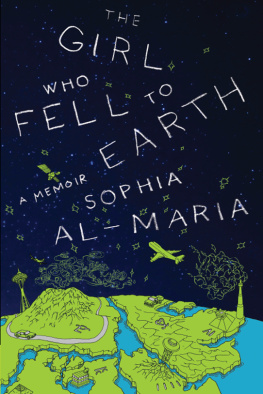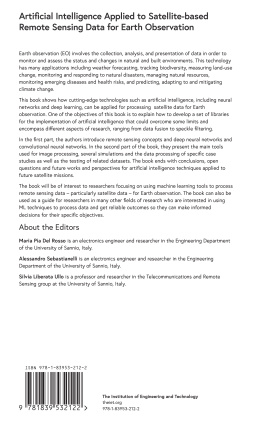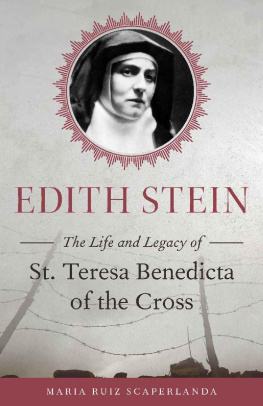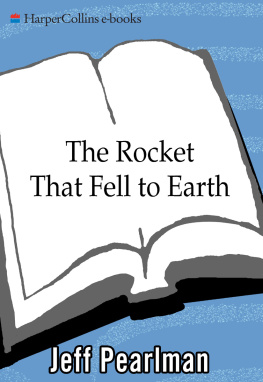Sophia Al-Maria - The Girl Who Fell to Earth
Here you can read online Sophia Al-Maria - The Girl Who Fell to Earth full text of the book (entire story) in english for free. Download pdf and epub, get meaning, cover and reviews about this ebook. year: 2012, publisher: HarperCollins, genre: Science / Art. Description of the work, (preface) as well as reviews are available. Best literature library LitArk.com created for fans of good reading and offers a wide selection of genres:
Romance novel
Science fiction
Adventure
Detective
Science
History
Home and family
Prose
Art
Politics
Computer
Non-fiction
Religion
Business
Children
Humor
Choose a favorite category and find really read worthwhile books. Enjoy immersion in the world of imagination, feel the emotions of the characters or learn something new for yourself, make an fascinating discovery.
- Book:The Girl Who Fell to Earth
- Author:
- Publisher:HarperCollins
- Genre:
- Year:2012
- Rating:5 / 5
- Favourites:Add to favourites
- Your mark:
- 100
- 1
- 2
- 3
- 4
- 5
The Girl Who Fell to Earth: summary, description and annotation
We offer to read an annotation, description, summary or preface (depends on what the author of the book "The Girl Who Fell to Earth" wrote himself). If you haven't found the necessary information about the book — write in the comments, we will try to find it.
The Girl Who Fell to Earth — read online for free the complete book (whole text) full work
Below is the text of the book, divided by pages. System saving the place of the last page read, allows you to conveniently read the book "The Girl Who Fell to Earth" online for free, without having to search again every time where you left off. Put a bookmark, and you can go to the page where you finished reading at any time.
Font size:
Interval:
Bookmark:

THE GIRL
WHO FELL TO
EARTH
A MEMOIR BY
SOPHIA AL-MARIA


CONTENTS
Greetings!
May time bring us together.

Arabic recording on the Voyager Spacecraft Golden Records
This story begins with a winking star. Dusk is falling across the Arabian Gulf and with it comes Maghreb prayer. Only after the sun has set and the shoulder-angels have been greeted will the stars come out on the television. The year is 1969, and the Lebanese songbird Samira Tawfik prepares to perform live from a studio at Kuwait TV. Look to him, the director orders, gesturing to the cameraman. Right there into his lens. Samira obliges, raising her veil and fanning her lashes slowly at the big, black pupil of the camera. The director scurries back into the control room to survey the effect from an ellipse of black-and-white monitors. He smiles. The illusion is working! Samiras faces are shining down on him like a dozen silvery moons, and just like a fixed star or a portrait painting, no matter where he moves she seems to be looking at only him. In a few minutes on televisions all across the Arabian Peninsula, Samira will appear to look, with loving attention, into the eyes of each viewer.
The orchestra sits politely across from the singer, arrayed on a bandstand painted to look like a cosmic keyboard stretching infinitely into the backdrop. Even standing on her raised plinth, Samiras sequined gown columns clear to the floor. Her hair is both beehived and braided for the appearance, a clever combination evoking Bedouin girl and modern city lady at the same time.
You gazelle! Ya Samira! Somewhere out there is a boy wholl have his heart broken tonight, the director jokes through the talkback loudspeaker. The orchestra chortles, the cameraman nods his approval. Its true.
The metal microphone juts at attention under Samiras chin, straining up to catch the sound of her breath as she holds it in wait for the distant athan to finish. I cant sing a love song without at least one broken heart, she mews, shrugging with coquettish indifference.
The call-to-prayer falls silent and the countdown-to-live begins. The TV cameras wheel through their orbit into position. Samira closes her eyes and whispers just before her cue, Ya ain, ya laylOh Eye, Oh Nightand the airways open to her song.
Eighty miles out of Al-Hasa oasis in the Eastern Province of Saudi Arabia, a Bedouin boy named Matar was flicking the knob of a portable General Electric television on and off. He was waiting with a crowd of other kids for Maghreb prayer, when the sun would set and the imam would finally turn the generator on. Only then could their night begin and with it, the TV! Or al - tel-ay-veez-yawn , as they affectionately called it. Like the watering well, the long-drop outhouse, and everything else in the tiny settlement of Kuzahmiah, the TV was for communal use. But unlike the other shared utilities of the town, it commanded pride of place in the courtyard of their one-room mosque, much to the disappointment of the devout young imam. The imam had moved from the big city to the Bedouin settlement hoping to find a pure Islam, untainted by modernity. But the spiritual authenticity he sought from the members of the Al-Dafira tribe was a fantasy made most obvious to him by their love of the TV. Attached by wires to an antenna of steel ribbons artfully bent into the rough onion-shaped spire, the towns boys had strung the latticework of jury-rigged wires up alongside the minaret on the mud roof of the little mosque. This vexed the imam, who often complained to the patriarchs of the tribe at Friday prayer about this. Your television tower is taller than the minaret! Do you think this is acceptable? But no one seemed to care about these details as long as they didnt miss an episode of Lost in Space. Your children are being tempted away right under your noses, he warned. But the practical people of Al-Dafira were unbothered with the symbolic blasphemy the imam saw in a few inches of wire.
Every night an illuminated title-card of Quran shone coldly from the screen, silencing the children, who were transfixed in wait for the moment theyd be treated to a song or a cartoon. On this particular night, it was the beaming face of Samira Tawfiq that appeared to them. Her voice was beckoning and plaintive as she began with a modest mawwl : AaaaA-AaaaA. Her wordless melody peaked across the airwaves and the crowd of barefoot children in the oil-field wasteland scrambled to get closer. A little boy named Matar watched. And his heart soared, then dropped, in unison with the warbling voice as Samira sang, with a cheeky grin, of returning to an abandoned abode. Yesterday afternoon I went by where he lives. But I found nothing. Only sadness.
Matar noticed the deep dimple in her cheek when she smiled and wondered why she was so happy when this was supposed to be a sad song. But his critical thinking was halted when something new happened: Samira looked directly into the cameradirectly at Matar. He froze in her headlights; she winked! The string section swept upward to take the reins of the song, and the little boy went supernova with delight.
She saw me! She winked at me! She loves me!
He was jumping mid-crow when his older brother Mohamed cuffed him flat. She was winking at me , retard, he growled.
Mohamed then trapped Matar easily in a sunset flip, shoulders pinned by knees until Matar fell limp. He knew his bear of a brother would lose interest if he played deadhe just hoped it happened before Samiras song was over.
It was around this time that the ten-year-old Matar began keeping a diarized account of his life in an old book of graph paper. He took detailed notes in blue pencil of his quotidian: what time he woke, how many times he prayed, how far they traveledhow long that took, how many times his brother Mohamed picked a fight, and columns to track who won. Matar wrote all about what he ate and how it tasted; what he watched on TV and how it rated. It was as though he were afraid of leaving anything behindand that was strange for a Bedouin boy.
The following is the sequence of programming on Dhahran TV as remembered by Matar. The schedule, from what he understood, was calibrated by the Saudi Aramco Oil Company. At the time he was moved into the Kuzahmiah settlement, it ran something like this:
18:00 Looney Tunes or Popeye . Olive Oyl was translated into Arabic as Zeitoonah , and this is what Matar nicknamed his lanky, cow-hocked older sister Moody.
18:30Childrens hour: Mr. Ed , Lassie , or both. A few years later came Little House on the Prairie , which was a runaway hit. The settling traumas of the Ingalls girls struck a chord with Bedu kids being relocated to villages like Kuzahmiah from scattered camps that had been caught in the drill lights of oil derricks.
19:30News, with auspicious tidings of the kings good health as the lead item; once Matar remembers seeing American astronauts bouncing on the moon.
20:00 Asha prayer, more Quran.
20:15 Perry Mason , Rawhide , or Star Trek . Being the town Trekkie, Matar kept particularly detailed anthropological notes of the alien tribes and cultures in the show.
21:30An Egyptian comedy, an Indian musical, or an American western.
Next pageFont size:
Interval:
Bookmark:
Similar books «The Girl Who Fell to Earth»
Look at similar books to The Girl Who Fell to Earth. We have selected literature similar in name and meaning in the hope of providing readers with more options to find new, interesting, not yet read works.
Discussion, reviews of the book The Girl Who Fell to Earth and just readers' own opinions. Leave your comments, write what you think about the work, its meaning or the main characters. Specify what exactly you liked and what you didn't like, and why you think so.











